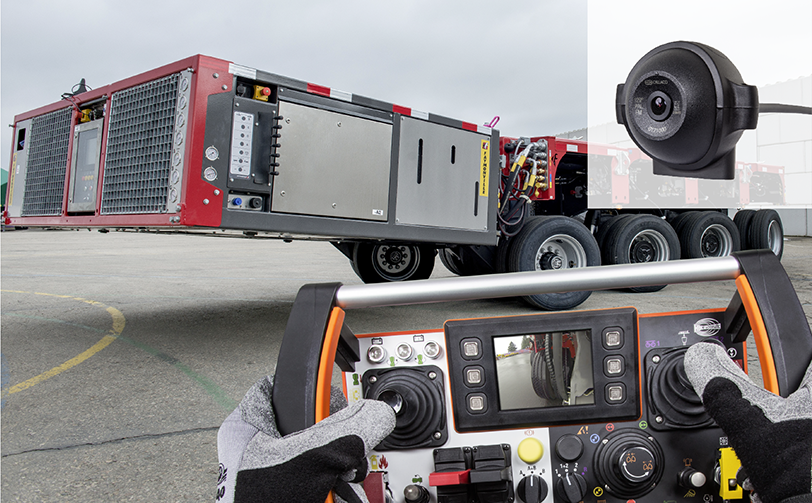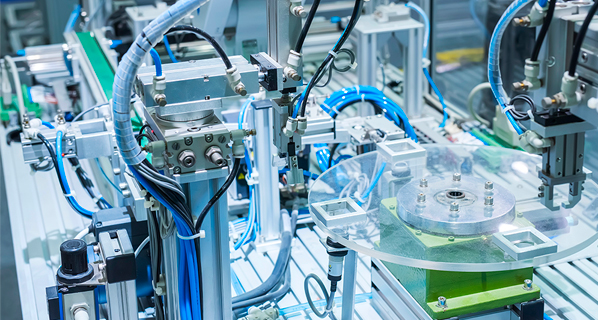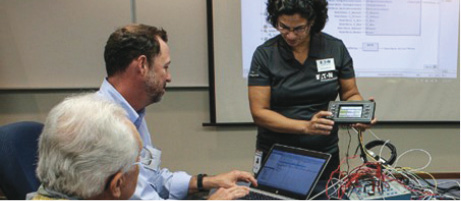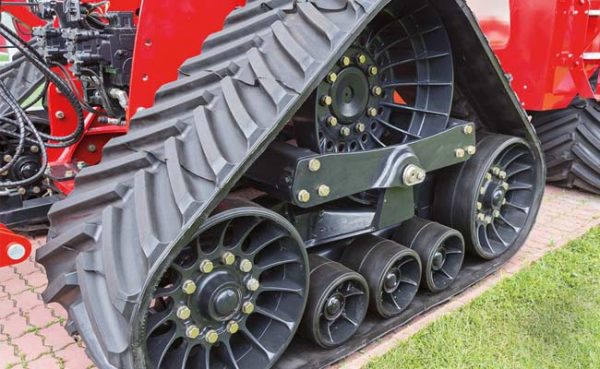Wireless Command: Radio Remote Controls and Fluid Power

By Hector Sanchez and Reed Miller, Regional Sales Managers for Mobile Hydraulics, HBC-radiomatic
Safety and productivity are top priorities for any machine builder, especially where human interaction with the machine is common. Time and again, industrial radio remote controls have proven central to the rapid improvement of productive, efficient, and safe machine control solutions. Offering the inherent advantages of untethered operation, coupled with rapid advancements to radio communications and intelligent functionality, it is no wonder that the inclusion and integration of radio controls into hydraulic and pneumatic machinery continue to grow year after year.
Hydraulic and pneumatic equipment is found in a variety of environments and industries, each with its own set of challenges for keeping operators and machines safe. Radio remote controls allow operators to position themselves with an optimal view of the machine, the work being done, and the broader operating environment. They remove the potential of the operator working in hazardous or dangerous environments and locations. In addition, they enable the direct communication between the equipment operator and jobsite operation personnel, while reducing miscommunication and the potential for the misinterpretation of hand signals. They also remove assumptions of the machine operation in relation to the environment. By means of a radio remote control, the operator can evaluate work tasks, check conditions, and constantly monitor the work environment for operational changes, obstacles, or sudden weather events.
State-of-the-art products provide complete machine feedback to the radio remote control for the operator. Feedback options include high resolution displays, LEDs, haptic, and audible alerts. Safety initiatives that are driving all industries have increased the demand for the use of radio remote controls. More recent developments such as RFID operator cards and data logging devices can manage operator access and monitor machine and control activities. Another safety initiative for radio remote controls is the use of live video feedback technology. This innovation allows for the display of live video images of the working environment on a color display that is integrated into the radio control transmitter. The video feature may work with one or more cameras installed on the machine or in the working area and is easily selected via a rotary or toggle switch. Using a separate radio link with a range of up to approximately 150 meters (165 yards), the cameras transmit high-quality live images to the radio control’s display. Operators benefit from a clear view of the working area. They can detect and react to potential dangers, and work becomes considerably safer. Additionally, the operator can choose between the live video feedback or machine diagnostics.

Remote operation of fluid power equipment
All hydraulic and pneumatic equipment lends itself to remote operation. Radio remote controls can be found in a broad range of industries including mining, manufacturing, oil and gas, entertainment, utilities, construction, agriculture, transportation, automation, and logistics. Radio remote controls frequently control construction equipment such as excavators, dozers, mobile truck cranes, wheel loaders, self-erecting cranes, and all- and rough-terrain cranes. They also control oilfield tools such as pipe handlers, rig walkers, torquing tools, and winches. Additionally, they can be seen controlling industrial transporters, trailers, dollies, lift trucks, and specialty agricultural equipment. As long as the equipment is electrically or electrohydraulically controlled, radio remote control systems can be easily implemented via several standard interfaces. These may include relays, variable voltage/current/PWM, relay or high-side switch outputs, or bus interfaces such as CANopen, CANopen Safety, Profibus, RS232/485, Profinet, SAE J1939, UART, IQAN, DeviceNet, and EtherNet/IP.
The broad capability of today’s radio remote controls typically offers the same control the driver would have in the cab or at the control station. The operator sees machine feedback via display screen graphics, LEDs, audible or haptic feedback, or live video feedback from remote cameras. These capabilities significantly increase productivity by minimizing extra personnel while speeding up work processes and making each task safer. Radio remote controls offer the operator an optimal vantage point of the controlled machine, reducing miscommunication between workers and permitting constant monitoring of the operating environment.

Assessing remote control systems
Safety is the top priority when discussing radio remote controls. Concerns include the safety of operators and other personnel and protecting the machines themselves. Secondary concerns include durability, reliability, and security, which also contribute to safe operation. The operator needs to be on the jobsite to perform the work at hand and needs the equipment to be reliably ready. Rugged radio remote controls are ideally suitable for highly demanding tasks in diverse environments and weather conditions. Operators rely on durable, high-quality products that react safely and dependably in all cases. In addition, customers and operators require systems that are serviceable and supported by the manufacturer. Worldwide service networks need to offer quick and competent personal service around the globe, wherever the customer may be.
Another important question is customization. Operators are increasingly requiring tailor-made products that perfectly fit their needs, not only for an ideal interface for the operator but also for the optimum operation of the equipment. Most original equipment manufacturers have their own unique way of designing controls layout, and radio remote control systems are no exception. They are routinely designed to complement this layout to provide consistency for the operator.
The general operating environment of the machine or equipment typically dictates whether remote control operation is feasible, efficient, or safe for the operator. At the core of radio remote controls is the radio technology. Due to the various operating environments and types of equipment, the frequency management of these systems is essential when evaluating radio remote control systems. Another critical point is the capability to engineer the type of system that provides the optimal balance to the operator, equipment, and the required functionality. This includes the type of transmitter the operator uses, how it is designed and configured to maintain consistency with the cab or control station, and the everyday demands of the task and the environment. Functional safety of commands has also become a requirement for the radio remote control of modern machines, which require radio remote control systems that can be seamlessly integrated while maintaining or exceeding the mandated safety levels for control. Worldwide acceptance of safety standards such as the machinery directive ISO 13849-1, ATEX, IECEx, NEC, and others may drive many functional requirements of a radio remote control system.
Training challenges
As with any change, there is always a learning curve when adapting to a radio remote control system. However, the extent of this curve depends on the careful selection of radio control solutions to ensure they match the natural movement of the operator with the application. Training should focus on slow and steady progress in a controlled environment, and the types of training depends on the complexity of the application and its standard operating procedures. Training options are also often subject to the specific criteria defined by the employer, the manufacturer of the equipment, or government regulation. HBC-radiomatic offers safety options for radio remote control systems to assist with the training of new operators on various pieces of equipment. Operator-specific system and feature access can be implemented via smart access cards to ensure the available control options fit to the experience and skill level of the operator.
Radio controls have become a valuable tool for the safe operation of mobile and industrial equipment in all types of environments. As fluid power markets continue to evolve with new applications and safety requirements, radio control manufacturers must invest in developing new features and functions to help customers optimize efficiency and economic viability of their systems. With almost 75 years of leadership and development of safe radio remote controls, HBC-radiomatic has been a cornerstone of this growing industry.








seeking three banks remote.